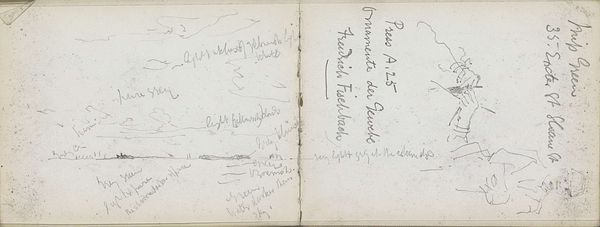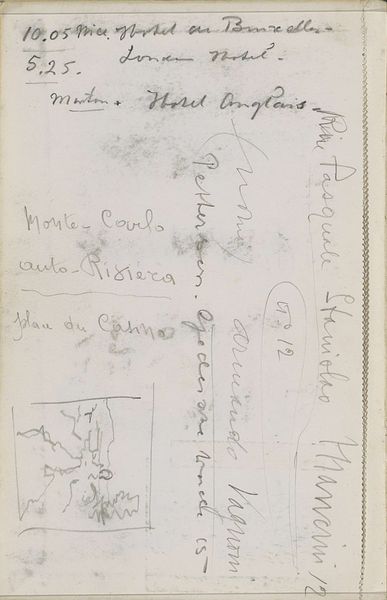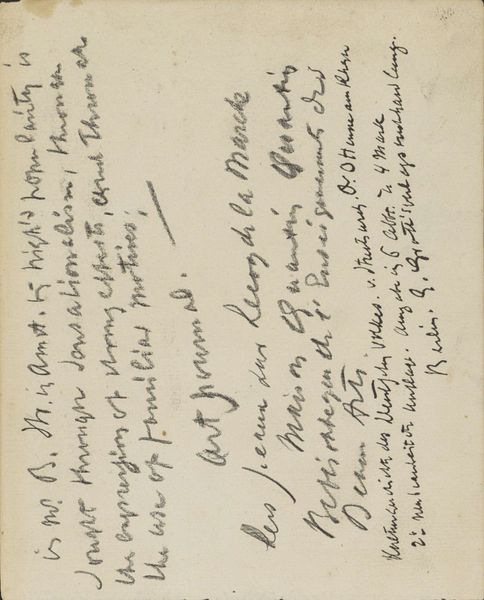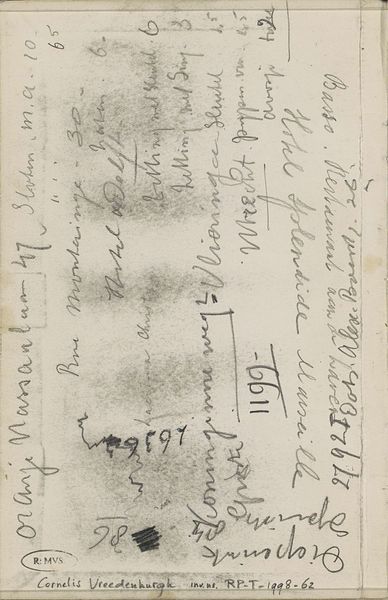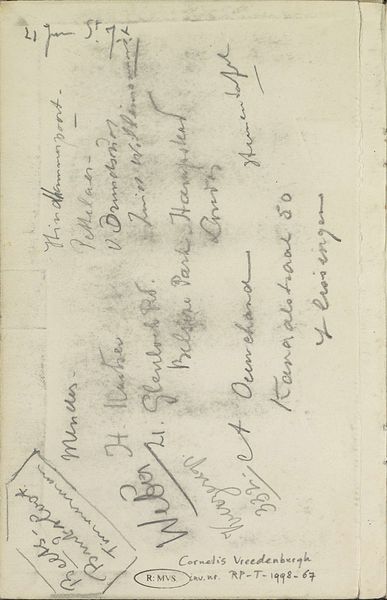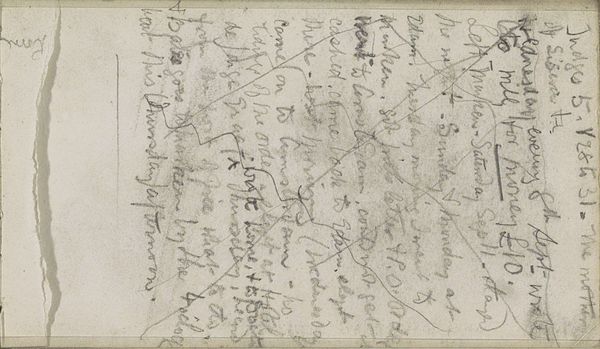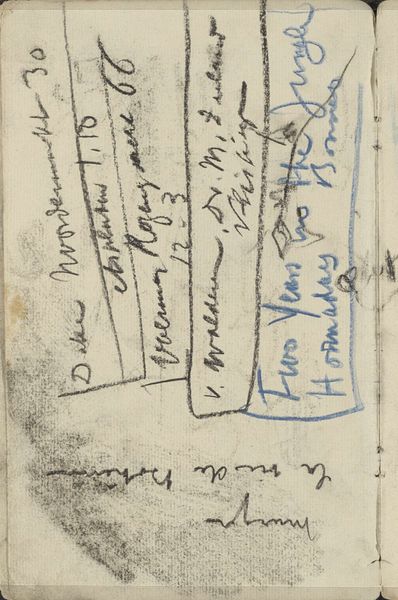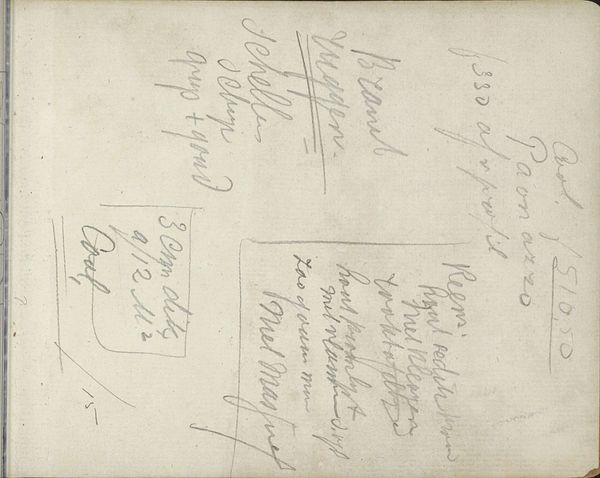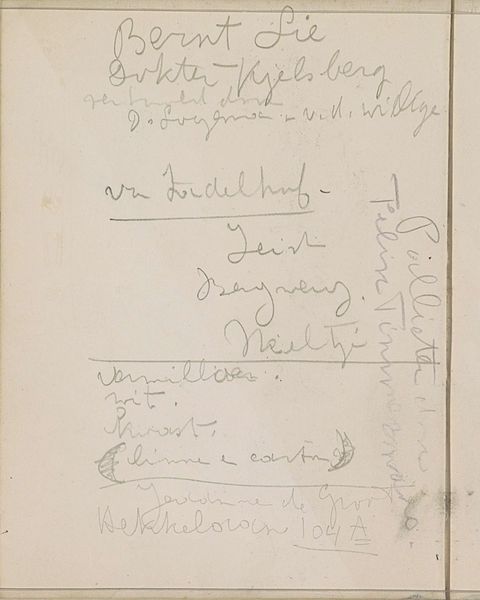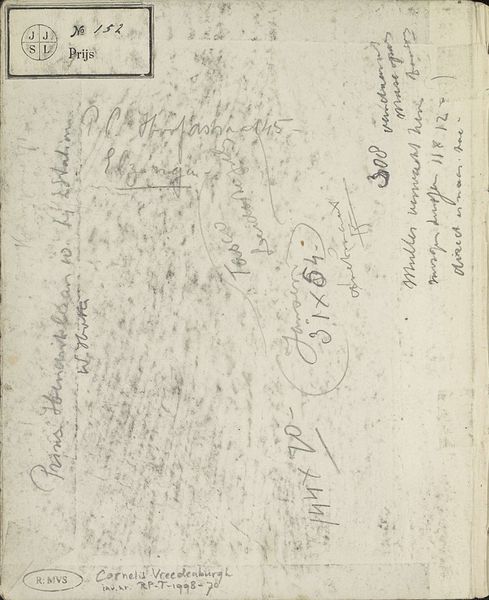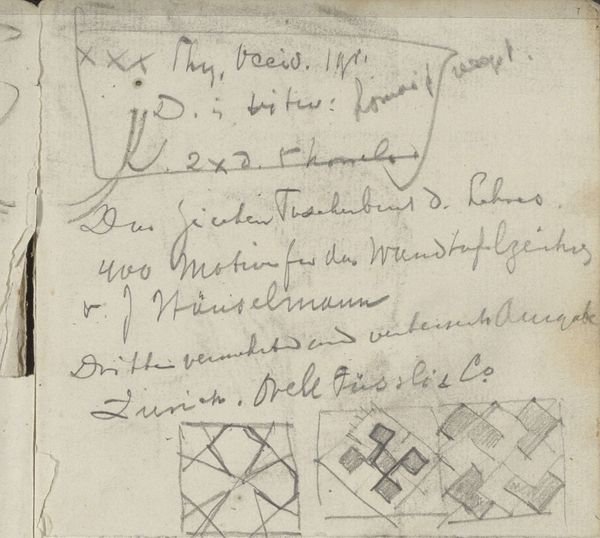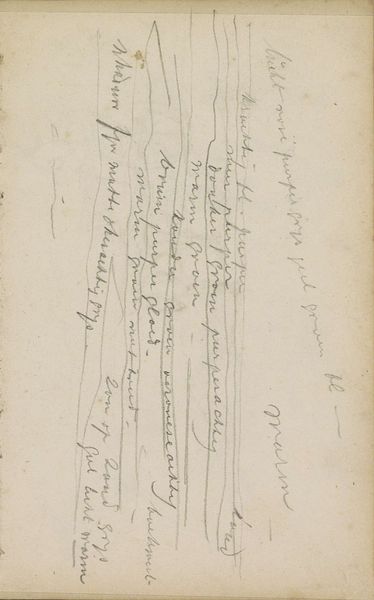
drawing, mixed-media, paper, ink, pen
#
drawing
#
mixed-media
#
paper
#
personal sketchbook
#
ink
#
abstraction
#
pen work
#
pen
#
modernism
Copyright: Rijks Museum: Open Domain
Curator: Welcome. Today, we're observing "Notities," a mixed-media drawing on paper crafted with pen and ink by Cornelis Vreedenburgh, sometime between 1890 and 1946. It is currently held in the Rijksmuseum collection. Editor: My initial reaction is…chaotic. It looks like a snapshot of the artist's fleeting thoughts. All of the overlapping inscriptions create a sense of unrest, maybe even anxiety. Curator: I see your point about its frantic feel. I am particularly intrigued by the surface texture, with its overlaid, and, in some instances, scratched marks, this work emphasizes a linear quality—a symphony of different calligraphic styles distributed asymmetrically across the rectangular page. The penmanship varies quite a bit, does it not? Editor: Absolutely. To me, this inconsistency reveals the dynamism of lived experience. Consider the implications of Vreedenburgh’s artistic explorations occurring in a period punctuated by considerable socio-political change and world wars. These scribbles act as a physical record of a particular history and cultural memory. How does that impact your understanding? Curator: That adds another layer to what could be construed as purely abstract marks and notations. When observing that it is a page from a personal sketchbook, I feel inclined to see it as a kind of visual record—capturing an individual thought process independent of outside events. The interplay of form and content is central. Editor: But can we fully separate the artist's inner world from the social and political contexts surrounding them? For me, it is more rewarding to situate the sketchbook page within larger historical narratives. It reveals not just Vreedenburgh’s inner life, but also gives glimpses into the societal framework that shaped him. Curator: Perhaps, but the emphasis on linear elements and textural patterns, without immediately giving way to the artist's time, still makes for a compelling work from an aesthetic viewpoint. I am intrigued by this relationship between abstract thought and reality, don’t you agree? Editor: I find your emphasis on "abstraction" somewhat limiting. Seeing beyond those elements of art and towards social awareness empowers us. Curator: I will admit that bringing in the context gives a richer texture to the original artwork, however. It creates new levels for discourse that previously did not exist. Editor: Exactly, and engaging with history in such a critical way offers us new pathways for comprehending the human experience as a whole.
Comments
No comments
Be the first to comment and join the conversation on the ultimate creative platform.
